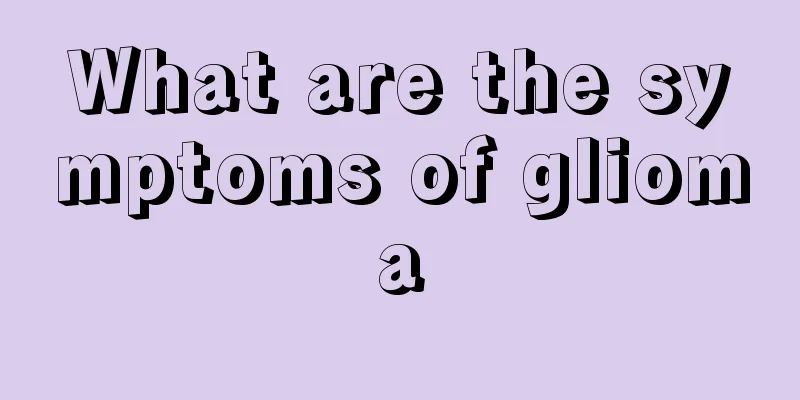What are the symptoms of glioma

|
There may be many friends who have not heard of the disease of glioma. Glioma is a tumor mainly occurring in the neuroectoderm. This tumor can damage the glial and nerve cells, and further affect the patient to cause symptoms such as headache, nausea and vomiting, and unstable standing. Therefore, everyone should pay attention to this disease. 1. Astrocytoma The malignancy is not high, the growth is slow, the course of the disease is long, and the symptoms appear earlier when the lesions are located under the tentorium. The local symptoms of lesions in different parts are different, but the progressive chronic increase in intracranial pressure is the same. It is mainly treated with complete surgical resection, supplemented by radiotherapy + chemotherapy, and brain herniation occurs in the late stage. 2. Astroblastoma (Astrocytoma III) The clinical manifestations are similar to those of astrocytoma, but the disease progresses faster, with an average course of about one and a half years. 3. Glioblastoma multiforme (astrocytoma IV) The tumor is highly malignant, grows fast, and has a short course of 3 months on average. Some tumors develop with bleeding, and symptoms of increased intracranial pressure are obvious. Many patients also have epileptic seizures. Localized symptoms are prominent and develop rapidly, with corresponding symptoms occurring depending on the location of the tumor. 4. Ependymoma Occurs in the ependymal cells of the ventricular system and the underlying glial epithelial cells. It is more common in children and young people. It is located in the ventricles and may extend into the brain parenchyma. The tumor is large and occasionally multiple. The average course of the disease is one year. Those located in the fourth ventricle usually have a shorter course. The disease is often manifested by symptoms such as increased intracranial pressure, such as headache and vomiting. 5. Medulloblastoma It is a common type of brain tumor in children, mostly located in the cerebellar vermis, protruding into the fourth ventricle or filling the ventricle, forming obstructive hydrocephalus. There may be bleeding in the tumor. The disease is characterized by headache, vomiting, etc., and is also accompanied by unstable gait and standing. |
<<: How to treat toenail growing into flesh
>>: What's the matter with sore and weak legs
Recommend
Preventing and treating liver fire in spring
We all know that if the liver fire is strong, it ...
What causes back pain in the middle of the night?
It is quite common to have back pain in the middl...
What can you eat to prevent liver cancer? Who are the people who are susceptible to liver cancer?
Liver cancer patients are mostly middle-aged and ...
What is the shortest life expectancy for osteosarcoma
Osteosarcoma, as the name suggests, is not easy t...
How much does glioma cost
Glioma does not appear often in our lives, but th...
How to effectively prevent the occurrence of bone cancer
Bone cancer is a type of cancer. Needless to say,...
Descaling the electric kettle
We use electric kettles in our daily lives. It sa...
How to stop leg hair from growing
People's skin is smooth and delicate before p...
Indications and contraindications of minimally invasive laser surgery for laryngeal cancer
As early as the 1960s, laser surgery began to be ...
What should I pay attention to in my diet after I was diagnosed with uterine cancer
Endometrial cancer is a disease that seriously af...
Methods for preventing and treating frostbite in winter
When autumn and winter come every year, we will s...
What is the best way to treat advanced lung cancer? How does TCM treat advanced lung cancer with dialectical treatment?
In traditional Chinese medicine, lung cancer is d...
What are the more obvious symptoms of osteosarcoma
Osteosarcoma mostly occurs in adolescents and chi...
What disease is bronchial breath sounds
What is the definition of bronchial breath sounds...
Experts explain relevant nursing measures for prostate cancer
Prostate cancer is a common cancer among men. Man...









